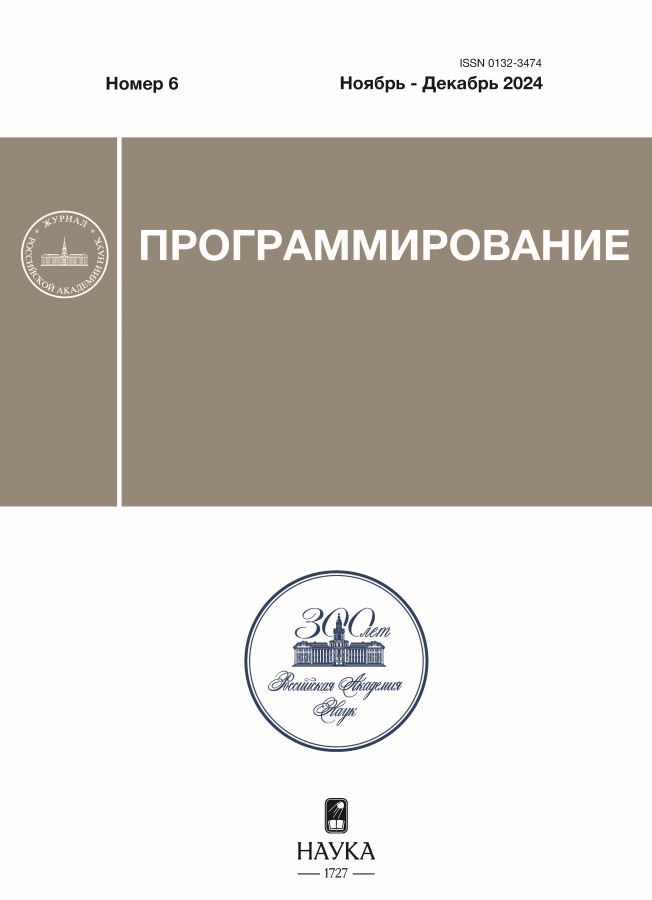Neural Network Method for Detecting Blur in Histological Images
- Authors: Nazarenko G.S.1, Krylov A.S.1
-
Affiliations:
- Lomonosov Moscow State University
- Issue: No 3 (2024)
- Pages: 67-74
- Section: DATA ANALYSIS
- URL: https://permmedjournal.ru/0132-3474/article/view/675696
- DOI: https://doi.org/10.31857/S0132347424030075
- EDN: https://elibrary.ru/QAGUUM
- ID: 675696
Cite item
Abstract
In this paper we consider the problem of detecting blurred regions in high-resolution full-slide histologic images. The proposed method is based on the use of a Fourier neural operator trained on the results of two simultaneously used approaches: blur detection using multiscale analysis of the discrete cosine transform coefficients and estimation of the degree of sharpness of objects edges in the image. The efficiency of the algorithm is confirmed on images from the datasets PATH-DT-MSU [1] and FocusPath [2].
Keywords
Full Text
About the authors
G. S. Nazarenko
Lomonosov Moscow State University
Author for correspondence.
Email: s02190303@gse.cs.msu.ru
Russian Federation, Moscow
A. S. Krylov
Lomonosov Moscow State University
Email: kryl@cs.msu.ru
Russian Federation, Moscow
References
- Khvostikov A., Krylov A., Mikhailov I., Malkov P. Visualization and Analysis of Whole Slide Histological Images // Lecture Notes in Computer Science. 2023. V. 13644. Р. 403–413.
- Hosseini M., Zhang Y., Plataniotis K. Encoding visual sensitivity by maxpol convolution filters for image sharpness assessment // IEEE Transactions on Image Processing. 2019. V. 28. Р. 4510–4525.
- Taqi S.A., Sami S.A., Sami L.B., Zaki S.A. A review of artifacts in histopathology // Journal of oral and maxillofacial pathology: JOMFP. 2018. V. 22. P. 279–287.
- Priego-Torres B.M., Sanchez-Morillo D., Fernandez-Granero M.A., Garcia-Rojo M. Automatic segmentation of whole-slide H&E stained breast histopathology images using a deep convolutional neural network architecture // Expert Systems With Applications. 2020. V. 151. P. 113387.
- Kanwal N., Perez-Bueno F., Schmidt A., Engan K., Molina R. The devil is in the details: Whole slide image acquisition and processing for artifacts detection, color variation, and data augmentation: A review // IEEE Access. 2022. V. 10. Р. 58821.
- Janowczyk A. et al. HistoQC: an open-source quality control tool for digital pathology slides // JCO clinic. cancer informatics. 2019. V. 3. P. 1–7.
- Albuquerque T., Moreira A., Cardoso J. Deep ordinal focus assessment for whole slide images // Proceedings of the IEEE/CVF ICCV. 2021. Р. 657–663.
- Senaras C., Niazi M., Lozanski G., Gurcan M. DeepFocus: detection of out-of-focus regions in whole slide digital images using deep learning // PloS one. 2018. V. 13. Р. e0205387.
- Kohlberger T., Liu Y., Moran M. et al. Whole-slide image focus quality: Automatic assessment and impact on ai cancer detection // Journal of pathology informatics. 2019. V. 10. Р. 39.
- Wang Z., Hosseini M., Miles A., Plataniotis K., Wang Z. Focuslitenn: High efficiency focus quality assessment for digital pathology. MICCAI. Springer International Publishing, 2020. P. 403–413.
- Kanwal N. et al. Are you sure it’s an artifact? Artifact detection and uncertainty quantification in histological images // Computerized Medical Imaging and Graphics. 2024. V. 112. P. 102321.
- Faroughi S., Pawar N., Fernandes C. et al. Physics-guided, physics-informed, and physics-encoded neural networks in scientific computing // arXiv preprint. arXiv:2211.07377, 2022.
- Li Q., Liu X., Han K., Guo C., Jiang J., Ji X., Wu X. Learning to autofocus in whole slide imaging via physics-guided deep cascade networks // Optics Express. 2022. V. 30. Р. 14319–14340.
- Alireza Golestaneh S., Karam L. Spatially-varying blur detection based on multiscale fused and sorted transform coefficients of gradient magnitudes // Proceedings of ICPR. 2017. Р. 5800–5809.
- Kumar J., Chen F., Doermann D. Sharpness estimation for document and scene images // Proceedings of ICPR. 2012. Р. 3292–3295.
- Langelaar G.C., Setyawan I., Lagendijk R.L. Watermarking digital image and video data. A state of-the-art overview // IEEE Signal processing magazine. 2000. V. 17. No. 5. Р. 20–46.
- Shi J., Xu L., Jia J. Discriminative blur detection features // Proceedings of ICPR. 2014. Р. 2965–2972.
- Yan Q., Xu L., Shi J., Jia J. Hierarchical saliency detection // Proceedings of ICPR. 2013. Р. 1155–1162.
- Gastal E., Oliveira M. Domain transform for edge-aware image and video processing // ACM SIGGRAPH. 2011. Р. 1–12.
- Ferzli R., Karam L.J. A no-reference objective image sharpness metric based on the notion of just noticeable blur (JNB) // IEEE transactions on image processing. 2009. V. 18. No. 4. Р. 717–728.
- Nazarenko G., Nasonov A., Krylov A. A procedure for finding blur areas in histological images, Proc. // 33nd Int. Conf. on Computer Graphics and Vision. M.: Keldysh Institute of Applied Mathematics, RAS, 2023.
- Yuki Mochizuki Normalize image brightness. https://cvtech.cc/std/
- Li Z., Kovachki N., Azizzadenesheli K., Liu B., Bhattacharya K., Stuart A., Anandkumar A. Fourier neural operator for parametric partial differential equations // arXiv preprint. arXiv:2010.08895, 2020.
Supplementary files

















